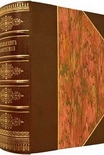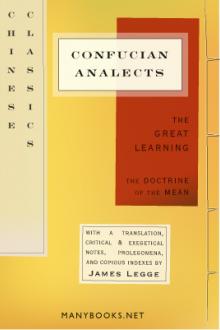Myths and Legends of China by E. Werner (free ebook reader for iphone TXT) 📗

- Author: E. Werner
Book online «Myths and Legends of China by E. Werner (free ebook reader for iphone TXT) 📗». Author E. Werner
As a result of the reform movement into which China was forced as an alternative to foreign domination toward the end of the Manchu Period, but chiefly owing to the bait held out by Western Powers, that extraterritoriality would be abolished when China had reformed her judicial system, a new Provisional Criminal Code was published. It substituted death by hanging or strangulation for decapitation, and imprisonment for various lengths of time for bambooing. It was adopted in large measure by the Republican régime, and is the chief legal Page 32instrument in use at the present time. But close examination reveals the fact that it is almost an exact copy of the Japanese penal code, which in turn was modelled upon that of Germany. It is, in fact, a Western code imitated, and as it stands is quite out of harmony with present conditions in China. It will have to be modified and recast to be a suitable, just, and practicable national legal instrument for the Chinese people. Moreover, it is frequently overridden in a high-handed manner by the police, who often keep a person acquitted by the Courts of Justice in custody until they have ‘squeezed’ him of all they can hope to get out of him. And it is noteworthy that, though provision was made in the Draft Code for trial by jury, this provision never went into effect; and the slavish imitation of alien methods is shown by the curiously inconsistent reason given—that “the fact that jury trials have been abolished in Japan is indicative of the inadvisability of transplanting this Western institution into China!”
Local Government
The central administration being a far-flung network of officialdom, there was hardly any room for local government apart from it. We find it only in the village elder and those associated with him, who took up what government was necessary where the jurisdiction of the unit of the central administration—the district magistracy—ceased, or at least did not concern itself in meddling much.
Military System
The peace-loving agricultural settlers in early China had at first no army. When occasion arose, all the Page 33farmers exchanged their ploughshares for swords and bows and arrows, and went forth to fight. In the intervals between the harvests, when the fields were clear, they held manoeuvres and practised the arts of warfare. The king, who had his Six Armies, under the Six High Nobles, forming the royal military force, led the troops in person, accompanied by the spirit-tablets of his ancestors and of the gods of the land and grain. Chariots, drawn by four horses and containing soldiers armed with spears and javelins and archers, were much in use. A thousand chariots was the regular force. Warriors wore buskins on their legs, and were sometimes gagged in order to prevent the alarm being given to the enemy. In action the chariots occupied the centre, the bowmen the left, the spearmen the right flank. Elephants were sometimes used in attack. Spy-kites, signal-flags, hook-ladders, horns, cymbals, drums, and beacon-fires were in use. The ears of the vanquished were taken to the king, quarter being rarely if ever given.
After the establishment of absolute monarchical government standing armies became the rule. Military science was taught, and soldiers sometimes trained for seven years. Chariots with upper storeys or spy-towers were used for fighting in narrow defiles, and hollow squares were formed of mixed chariots, infantry, and dragoons. The weakness of disunion of forces was well understood. In the sixth century A.D. the massed troops numbered about a million and a quarter. In A.D. 627 there was an efficient standing army of 900,000 men, the term of service being from the ages of twenty to sixty. During the Mongol dynasty (1280–1368) there was a navy of 5000 ships manned by 70,000 trained fighters. The Mongols completely revolutionized tactics and improved Page 34on all the military knowledge of the time. In 1614 the Manchu ‘Eight Banners,’ composed of Manchus, Mongolians, and Chinese, were instituted. The provincial forces, designated the Army of the Green Standard, were divided into land forces and marine forces, superseded on active service by ‘braves’ (yung), or irregulars, enlisted and discharged according to circumstances. After the war with Japan in 1894 reforms were seriously undertaken, with the result that the army has now been modernized in dress, weapons, tactics, etc., and is by no means a negligible quantity in the world’s fighting forces. A modern navy is also being acquired by building and purchase. For many centuries the soldier, being, like the priest, unproductive, was regarded with disdain, and now that his indispensableness for defensive purposes is recognized he has to fight not only any actual enemy who may attack him, but those far subtler forces from over the sea which seem likely to obtain supremacy in his military councils, if not actual control of his whole military system. It is, in my view, the duty of Western nations to take steps before it is too late to avert this great disaster.
Ecclesiastical Institutions
The dancing and chanting exorcists called wu were the first Chinese priests, with temples containing gods worshipped and sacrificed to, but there was no special sacerdotal class. Worship of Heaven could only be performed by the king or emperor. Ecclesiastical and political functions were not completely separated. The king was pontifex maximus, the nobles, statesmen, and civil and military officers acted as priests, the ranks being similar to those of the political hierarchy. Worship took place in the ‘Hall of Light,’ which was also a palace and Page 35audience and council chamber. Sacrifices were offered to Heaven, the hills and rivers, ancestors, and all the spirits. Dancing held a conspicuous place in





Comments (0)